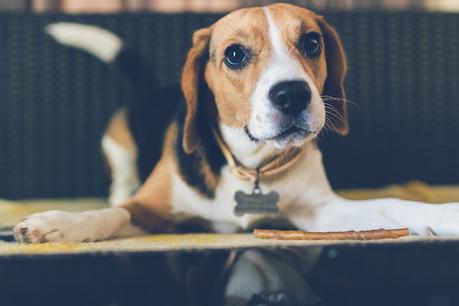
All dogs do need grooming to some extent. Short-haired breeds that don't moult as much won't need grooming as often or as thoroughly as long-haired breeds that shed their coats a couple of times a year. The breed of dog doesn’t matter, grooming is still important to make sure that they are comfortable. Interestingly, their health can also affect their coat and vice versa. The foods that you feed your dog and its overall well-being will be apparent in the look of its coat. This is partially why a raw food diet has become so popular for dogs in the last few years but more on that later. Let's take a look.
The Link Between Your Dog's Health And Its Coat
Healthy dogs tend to have shinier, healthier coats, whereas dogs experiencing a health issue tend to have duller coats. Obviously, this won't be a foolproof way for you to assess your dog's health, but it is something to pay attention to. The diet that you feed your dog can have an effect on its coat too. When your dog's nutritional needs are met, it is apparent in the look of its coat. Conventional dog foods are more popular simply because they are easier, but they are not necessarily the most nutritionally sound option. ProDog Raw outlines the raw food for dogs' diets and has everything you need to get started.
The Importance Of Grooming
Grooming is integral to maintaining your dog's coat. It removes all of the dirt build-up, the shedding fur, and dandruff or dead skin cells. The follicles are stimulated, which helps to kickstart the production of oils which help to protect the skin. During a groom, your dog's ears, teeth and claws tend to be checked too. This allows you to catch problems early. Essentially, grooming your dog allows you to have a rudimentary health check performed at the same time.
The Frequency Of Grooming
Truth be told, there isn't really a rule for how often you should have your dog groomed. This is simply because some breeds are likely to need grooming more often than others. Long-haired breeds, or breeds that have a winter and summer coat will need grooming more often than short-haired breeds. In terms of frequency, you can just use your common sense, take a look at your dog, and you should be able to tell whether or not they need grooming. Does their fur look matted or scraggly? Are their nails long? These are tell-tale signs that your dog needs grooming.
It also makes sense to try and get your dog used to the grooming process as soon as possible; it desensitises them to the process and removes their fear. Grooming can cause your dog a great deal of anxiety because most people pay to have their dog groomed by a stranger, it is an unfamiliar environment with loud noises, and without your presence to calm them, this can be quite upsetting for your dog. Taking them early in life is really helpful in encouraging them to be more comfortable with the process. The grooming process in its entirety is likely to be a bi-monthly or seasonal obligation. Other than that, you will only need to bathe and brush your dog when they need it.
Grooming Your Dog Yourself
Most pet owners do prefer to pay someone else to groom their dog for them, but there isn't anything to say that you can't do it yourself. However, grooming isn't necessarily easy, it is a skill, so if you want to do it yourself, then you do need to be prepared to learn. Starting with washing and brushing, this is really easy; the stakes are low because you can't really wash or brush your dog incorrectly. Most dog owners do perform this grooming task themselves.
Next, trimming or clipping your dog's fur. The stakes here are obviously a lot higher because there is the possibility of hurting your dog or yourself in the process. There is also the potential to do it wrong too; your dog could end up with a really awful do. If you do want to give it a go, then you need to be careful, and you should do some research to see whether there are tutorials that you can follow or tips to bear in mind.
Finally, the finishing touches of a dog groom tend to be things like clipping their claws, checking their ears and expressing their anal glands. All of these are a lot harder to do, and they all have their dangers too. Your dog's nails have blood flow in them, and cutting them too short can make them bleed, cause pain and lead to infections. Expressing their anal glands is an invasive procedure which requires you to get knuckle deep in their bum, so if you're squeamish, a professional groomer is probably the better route.
In Conclusion
Grooming is essential maintenance for your dog, in the same way that maintaining our physical appearance counts as self-care for us. The same can be said for dogs; they just lack the opposable thumbs to carry out their personal hygiene tasks themselves. While it is absolutely possible to learn how to groom your dog yourself, paying someone is likely a lot easier.
If you enjoy my blog, please consider following me on Bloglovin'
